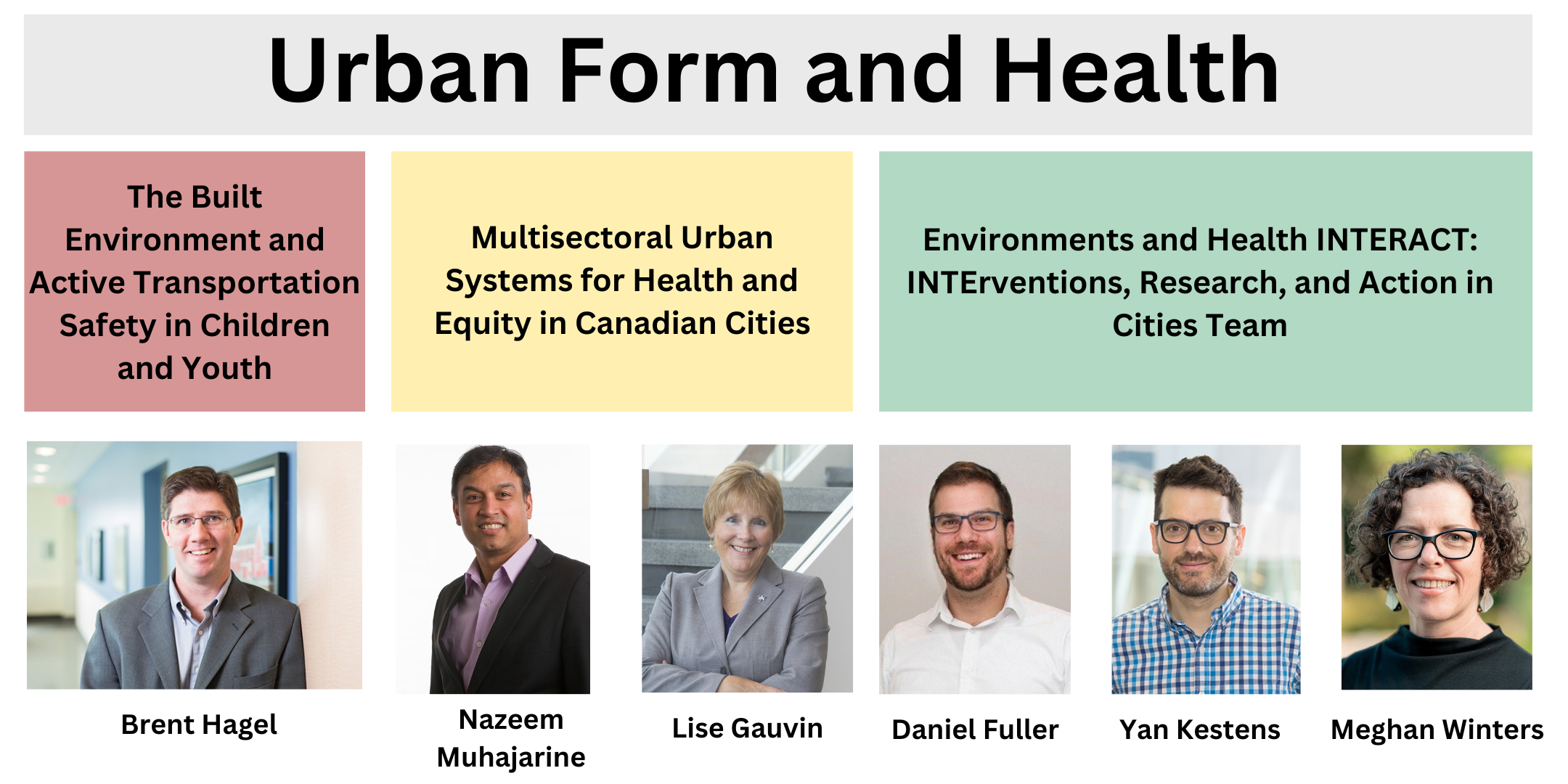- Location
- Zoom
- Series/Type
- DLSPH Event
- Format
- Online
- Dates
- February 27, 2023 from 3:00pm to 4:30pm
Links
The way cities are built have a significant impact on our health. From land-use mix to transportation infrastructure and housing, the physical features of communities influence the health-seeking behaviours of their residents, and contribute to opportunities to incorporate physical activity in their day-to-day lives. To better understand these connections, the Canadian Institutes of Health Research funded three projects to look at a variety of aspects of the urban form and urban development and how they impact public health. In this webinar, learn what researchers have discovered and where they plan to go next.
About the Projects
The Built Environment and Active Transportation Safety in Children and Youth
This research program studies how features of the built environment affect whether kids walk or bike to school and whether or not certain built environment features increase or decrease their likelihood of getting hurt. The program partners with injury prevention professionals, provincial governments, environmental organizations and traffic safety professionals who are in a position to help us better understand what features of traffic environments are dangerous or safe.
Multisectoral Urban Systems for Health and Equity in Canadian Cities
At the beginning of the 21st century, to counter threats to population health, Public Health Departments have forged new alliances with major Canadian cities. This research program studies partnerships aimed at transforming built environments to increase the availability of fruit and vegetables, promote public transport and physical activity, and improve availability of affordable housing.
Environments and Health INTERACT: INTErventions, Research, and Action in Cities Team
This research project measures how designing healthy cities can influence physical activity and how much people participate in social activities. It also designs tools, like mobile phone based apps, to measure how and where people move in their cities. This project evaluates four new infrastructure designs in four different Canadian cities (Vancouver, Victoria, Saskatoon and Montreal). It also develops and refines smartphone apps to measure how people move through cities. These tools include apps to measure physical activity and apps for interactive mapping of where people move in a city.
